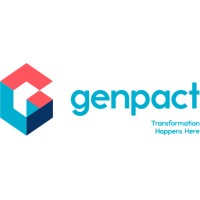
Illinois Housing Development Authority Company Cyber Security Posture
ihda.orgThe Illinois Housing Development Authority (IHDA) finances the creation and preservation of affordable housing in Illinois. IHDA was created by the state legislature in 1967 as a self-supporting agency to finance affordable housing across Illinois. IHDA does not use taxpayer dollars to sustain its operations, although it does administer publicly funded programs on behalf of the state. Since its creation, IHDA has provided more than $15 billion to finance a quarter million affordable homes. IHDA accomplishes its mission through a number of funding sources including the Illinois Affordable Housing Trust Fund, Illinois Affordable Housing Tax Credits, the allocation of federal Low-Income Housing Tax Credits and HOME Investment Partnership funds. IHDA is also a bonding authority and independently sells bonds, based on our strong credit rating of A1/AA-/AA- from Moody’s Investors Service, Standard & Poor’s and Fitch Ratings respectively. We partner with lenders, developers, local government, nonprofits, community groups and others to deliver low-cost financing programs. We provide financial assistance to low- and moderate-income homebuyers and homeowners, offer resources to developers who build or preserve affordable and mixed-income rental housing and provide oversight for hundreds of affordable rental communities across the state.
IHDA Company Details
illinois-housing-development-authority
400 employees
8965.0
none
Real Estate
ihda.org
Scan still pending
ILL_5294650
In-progress
Between 200 and 800
This score is AI-generated and less favored by cyber insurers, who prefer the TPRM score.
 IHDA Global Score
IHDA Global Score.png)

Illinois Housing Development Authority Company Scoring based on AI Models
| Model Name | Date | Description | Current Score Difference | Score |
|---|---|---|---|---|
| AVERAGE-Industry | 03-12-2025 | This score represents the average cybersecurity rating of companies already scanned within the same industry. It provides a benchmark to compare an individual company's security posture against its industry peers. | N/A | Between 200 and 800 |
Illinois Housing Development Authority Company Cyber Security News & History
| Entity | Type | Severity | Impact | Seen | Url ID | Details | View |
|---|---|---|---|---|---|---|---|
| Illinois Housing Development Authority | Breach | 80 | 4 | 02/2022 | ILL183111522 | Link | |
Rankiteo Explanation : Attack with significant impact with customers data leaksDescription: The website of Illinois Housing Development Authority went offline after an error caused some state rental assistance applicants to see information submitted by other applicants. The breach was a result of a coding error tied to an update to the website, which affected about 100 applicants. IHDA soon recognised the error and restored the website. | |||||||
Illinois Housing Development Authority Company Subsidiaries

The Illinois Housing Development Authority (IHDA) finances the creation and preservation of affordable housing in Illinois. IHDA was created by the state legislature in 1967 as a self-supporting agency to finance affordable housing across Illinois. IHDA does not use taxpayer dollars to sustain its operations, although it does administer publicly funded programs on behalf of the state. Since its creation, IHDA has provided more than $15 billion to finance a quarter million affordable homes. IHDA accomplishes its mission through a number of funding sources including the Illinois Affordable Housing Trust Fund, Illinois Affordable Housing Tax Credits, the allocation of federal Low-Income Housing Tax Credits and HOME Investment Partnership funds. IHDA is also a bonding authority and independently sells bonds, based on our strong credit rating of A1/AA-/AA- from Moody’s Investors Service, Standard & Poor’s and Fitch Ratings respectively. We partner with lenders, developers, local government, nonprofits, community groups and others to deliver low-cost financing programs. We provide financial assistance to low- and moderate-income homebuyers and homeowners, offer resources to developers who build or preserve affordable and mixed-income rental housing and provide oversight for hundreds of affordable rental communities across the state.
Access Data Using Our API

Get company history
.png)
IHDA Cyber Security News
Will County Resident Achieves Homeownership Dream through USDA Rural Development Single Family Housing Program, Habitat for Humanity, and Illinois Housing Department Authority Collab
Eligible applicants may purchase, build, rehabilitate, improve or relocate a dwelling in an eligible rural area with 100% financing. The program ...
Pritzker eyes affordable housing
Gov. JB Pritzker didn't mention President-elect Donald Trump's name in signing an executive order Wednesday to expand affordable housing options in Illinois.
Trends in US Cybersecurity Regulation
This Legal Update surveys new cybersecurity rules and regulations from the past year, including those from the SEC, FTC, FCC, FHA, NYDFS, FAA, FINRA, and CISA.
Housing: The 10 largest issuers of 1H
The top 10 issuers for housing deals accounted for $7.41 billion in 79 deals in the first half of this year.
Illinois Tech's CyberHawks Win Record-Breaking National Cybersecurity Championship
CyberHawks won the National Centers of Academic Excellence in Cybersecurity Cyber Games National Championship this week with a record-breaking score.
Technology for seniors by juniors
TACOS targets seniors in their outreach because the club's members believe the demographic can benefit from their knowledge and skillset.
CIO Leadership: Leveraging Advanced Technologies to Drive
CIO Leadership: Leveraging Advanced Technologies to Drive Business Success Will Guide the Conversation at HMG Strategy's Upcoming 2021 HMG Live!
News Releases
Sign up here to receive general news and information about Lake County. Visit our department pages to find news from specific departments.
Illinois Housing’s Mary Kenney Going to Private Sector
The Illinois Housing Development Authority is searching for a new executive director to replace Mary Kenney, who leaves Friday to join BMO as its director of ...

IHDA Similar Companies

Palm Beach County Board of County Commissioners
FirstService Residential is North America’s leading residential community manager. We are the preferred partner of all kinds of HOAs, community associations and strata corporations in the U.S. and Canada. Our managed communities include: Low-, mid- and high-rise condominiums and cooperatives Single

Colliers
Colliers is a global diversified professional services and investment management company. Operating through three industry-leading platforms—Real Estate Services, Engineering, and Investment Management—we have a proven business model, an enterprising culture, and a unique partnership philosophy that

Tiara Marga Trakindo
Tiara Marga Trakindo was established 16 August, 2000, as the parent company for the Tiara Marga Trakindo (TMT) Group of companies. There currently are 14 companies in the TMT Group separated into three sub-holdings: PT Trakindo Utama (the Caterpillar Equipment dealer for Indonesia); PT ABM Investama

Genpact Mortgage Services
The changing scope of today's mortgage landscape has lenders looking for innovative solutions to meet fluctuating demand and counter higher default levels. Genpact's mortgage processing services leverage worldwide delivery capabilities, modern technology, and smarter analytics to design, transform,

Keller Williams Colombia
Hemos creado este canal de comunicación con el fin de llevar los sistemas, modelos y valores de nuestra empresa para empezar a cambiar vidas. Colombia carece de un sistema formal de hacer negocios de bienes raíces, por eso, nuestro objetivo es ayudar a crear un ambiente de profesionalismo, bas

Lopes Consultoria de Imóveis
A GARANTIA DE SER LOPES A Lopes é a maior empresa de soluções integradas de intermediação, consultoria e promoção de financiamentos de imóveis do Brasil. Está presente em 10 estados - São Paulo, Rio de Janeiro, Minas Gerais, Espírito Santo, Rio Grande do Sul, Paraná, Santa Catarina, Bahia, Per

Frequently Asked Questions (FAQ) on Cybersecurity Incidents
IHDA CyberSecurity History Information
Total Incidents: According to Rankiteo, IHDA has faced 1 incidents in the past.
Incident Types: The types of cybersecurity incidents that have occurred include ['Breach'].
Total Financial Loss: The total financial loss from these incidents is estimated to be {total_financial_loss}.
Cybersecurity Posture: The company's overall cybersecurity posture is described as The Illinois Housing Development Authority (IHDA) finances the creation and preservation of affordable housing in Illinois. IHDA was created by the state legislature in 1967 as a self-supporting agency to finance affordable housing across Illinois. IHDA does not use taxpayer dollars to sustain its operations, although it does administer publicly funded programs on behalf of the state. Since its creation, IHDA has provided more than $15 billion to finance a quarter million affordable homes. IHDA accomplishes its mission through a number of funding sources including the Illinois Affordable Housing Trust Fund, Illinois Affordable Housing Tax Credits, the allocation of federal Low-Income Housing Tax Credits and HOME Investment Partnership funds. IHDA is also a bonding authority and independently sells bonds, based on our strong credit rating of A1/AA-/AA- from Moody’s Investors Service, Standard & Poor’s and Fitch Ratings respectively. We partner with lenders, developers, local government, nonprofits, community groups and others to deliver low-cost financing programs. We provide financial assistance to low- and moderate-income homebuyers and homeowners, offer resources to developers who build or preserve affordable and mixed-income rental housing and provide oversight for hundreds of affordable rental communities across the state..
Detection and Response: The company detects and responds to cybersecurity incidents through {description_of_detection_and_response_process}.
Incident Details
Incident 1: Ransomware Attack
Title: {Incident_Title}
Description: {Brief_description_of_the_incident}
Date Detected: {Detection_Date}
Date Publicly Disclosed: {Disclosure_Date}
Date Resolved: {Resolution_Date}
Type: {Type_of_Attack}
Attack Vector: {Attack_Vector}
Vulnerability Exploited: {Vulnerability}
Threat Actor: {Threat_Actor}
Motivation: {Motivation}
Incident 2: Data Breach
Title: {Incident_Title}
Description: {Brief_description_of_the_incident}
Date Detected: {Detection_Date}
Date Publicly Disclosed: {Disclosure_Date}
Date Resolved: {Resolution_Date}
Type: {Type_of_Attack}
Attack Vector: {Attack_Vector}
Vulnerability Exploited: {Vulnerability}
Threat Actor: {Threat_Actor}
Motivation: {Motivation}
Common Attack Types: As of now, the company has not encountered any reported incidents involving common cyberattacks.
Identification of Attack Vectors: The company identifies the attack vectors used in incidents through {description_of_identification_process}.
Impact of the Incidents
Incident 1: Ransomware Attack
Financial Loss: {Financial_Loss}
Data Compromised: {Data_Compromised}
Systems Affected: {Systems_Affected}
Downtime: {Downtime}
Operational Impact: {Operational_Impact}
Conversion Rate Impact: {Conversion_Rate_Impact}
Revenue Loss: {Revenue_Loss}
Customer Complaints: {Customer_Complaints}
Brand Reputation Impact: {Brand_Reputation_Impact}
Legal Liabilities: {Legal_Liabilities}
Identity Theft Risk: {Identity_Theft_Risk}
Payment Information Risk: {Payment_Information_Risk}
Incident 2: Data Breach
Financial Loss: {Financial_Loss}
Data Compromised: {Data_Compromised}
Systems Affected: {Systems_Affected}
Downtime: {Downtime}
Operational Impact: {Operational_Impact}
Conversion Rate Impact: {Conversion_Rate_Impact}
Revenue Loss: {Revenue_Loss}
Customer Complaints: {Customer_Complaints}
Brand Reputation Impact: {Brand_Reputation_Impact}
Legal Liabilities: {Legal_Liabilities}
Identity Theft Risk: {Identity_Theft_Risk}
Payment Information Risk: {Payment_Information_Risk}
Average Financial Loss: The average financial loss per incident is {average_financial_loss}.
Commonly Compromised Data Types: The types of data most commonly compromised in incidents are {list_of_commonly_compromised_data_types}.
Incident 1: Ransomware Attack
Entity Name: {Entity_Name}
Entity Type: {Entity_Type}
Industry: {Industry}
Location: {Location}
Size: {Size}
Customers Affected: {Customers_Affected}
Incident 2: Data Breach
Entity Name: {Entity_Name}
Entity Type: {Entity_Type}
Industry: {Industry}
Location: {Location}
Size: {Size}
Customers Affected: {Customers_Affected}
Response to the Incidents
Incident 1: Ransomware Attack
Incident Response Plan Activated: {Yes/No}
Third Party Assistance: {Yes/No}
Law Enforcement Notified: {Yes/No}
Containment Measures: {Containment_Measures}
Remediation Measures: {Remediation_Measures}
Recovery Measures: {Recovery_Measures}
Communication Strategy: {Communication_Strategy}
Adaptive Behavioral WAF: {Adaptive_Behavioral_WAF}
On-Demand Scrubbing Services: {On_Demand_Scrubbing_Services}
Network Segmentation: {Network_Segmentation}
Enhanced Monitoring: {Enhanced_Monitoring}
Incident 2: Data Breach
Incident Response Plan Activated: {Yes/No}
Third Party Assistance: {Yes/No}
Law Enforcement Notified: {Yes/No}
Containment Measures: {Containment_Measures}
Remediation Measures: {Remediation_Measures}
Recovery Measures: {Recovery_Measures}
Communication Strategy: {Communication_Strategy}
Adaptive Behavioral WAF: {Adaptive_Behavioral_WAF}
On-Demand Scrubbing Services: {On_Demand_Scrubbing_Services}
Network Segmentation: {Network_Segmentation}
Enhanced Monitoring: {Enhanced_Monitoring}
Incident Response Plan: The company's incident response plan is described as {description_of_incident_response_plan}.
Third-Party Assistance: The company involves third-party assistance in incident response through {description_of_third_party_involvement}.
Data Breach Information
Incident 2: Data Breach
Type of Data Compromised: {Type_of_Data}
Number of Records Exposed: {Number_of_Records}
Sensitivity of Data: {Sensitivity_of_Data}
Data Exfiltration: {Yes/No}
Data Encryption: {Yes/No}
File Types Exposed: {File_Types}
Personally Identifiable Information: {Yes/No}
Prevention of Data Exfiltration: The company takes the following measures to prevent data exfiltration: {description_of_prevention_measures}.
Handling of PII Incidents: The company handles incidents involving personally identifiable information (PII) through {description_of_handling_process}.
Ransomware Information
Incident 1: Ransomware Attack
Ransom Demanded: {Ransom_Amount}
Ransom Paid: {Ransom_Paid}
Ransomware Strain: {Ransomware_Strain}
Data Encryption: {Yes/No}
Data Exfiltration: {Yes/No}
Ransom Payment Policy: The company's policy on paying ransoms in ransomware incidents is described as {description_of_ransom_payment_policy}.
Data Recovery from Ransomware: The company recovers data encrypted by ransomware through {description_of_data_recovery_process}.
Regulatory Compliance
Incident 1: Ransomware Attack
Regulations Violated: {Regulations_Violated}
Fines Imposed: {Fines_Imposed}
Legal Actions: {Legal_Actions}
Regulatory Notifications: {Regulatory_Notifications}
Incident 2: Data Breach
Regulations Violated: {Regulations_Violated}
Fines Imposed: {Fines_Imposed}
Legal Actions: {Legal_Actions}
Regulatory Notifications: {Regulatory_Notifications}
Regulatory Frameworks: The company complies with the following regulatory frameworks regarding cybersecurity: {list_of_regulatory_frameworks}.
Ensuring Regulatory Compliance: The company ensures compliance with regulatory requirements through {description_of_compliance_measures}.
Lessons Learned and Recommendations
Incident 1: Ransomware Attack
Lessons Learned: {Lessons_Learned}
Incident 2: Data Breach
Lessons Learned: {Lessons_Learned}
Incident 1: Ransomware Attack
Recommendations: {Recommendations}
Incident 2: Data Breach
Recommendations: {Recommendations}
Key Lessons Learned: The key lessons learned from past incidents are {list_of_key_lessons_learned}.
Implemented Recommendations: The company has implemented the following recommendations to improve cybersecurity: {list_of_implemented_recommendations}.
References
Additional Resources: Stakeholders can find additional resources on cybersecurity best practices at {list_of_additional_resources}.
Investigation Status
Incident 1: Ransomware Attack
Investigation Status: {Investigation_Status}
Incident 2: Data Breach
Investigation Status: {Investigation_Status}
Communication of Investigation Status: The company communicates the status of incident investigations to stakeholders through {description_of_communication_process}.
Stakeholder and Customer Advisories
Incident 1: Ransomware Attack
Stakeholder Advisories: {Stakeholder_Advisories}
Customer Advisories: {Customer_Advisories}
Incident 2: Data Breach
Stakeholder Advisories: {Stakeholder_Advisories}
Customer Advisories: {Customer_Advisories}
Advisories Provided: The company provides the following advisories to stakeholders and customers following an incident: {description_of_advisories_provided}.
Initial Access Broker
Incident 1: Ransomware Attack
Entry Point: {Entry_Point}
Reconnaissance Period: {Reconnaissance_Period}
Backdoors Established: {Backdoors_Established}
High Value Targets: {High_Value_Targets}
Data Sold on Dark Web: {Yes/No}
Incident 2: Data Breach
Entry Point: {Entry_Point}
Reconnaissance Period: {Reconnaissance_Period}
Backdoors Established: {Backdoors_Established}
High Value Targets: {High_Value_Targets}
Data Sold on Dark Web: {Yes/No}
Monitoring and Mitigation of Initial Access Brokers: The company monitors and mitigates the activities of initial access brokers through {description_of_monitoring_and_mitigation_measures}.
Post-Incident Analysis
Incident 1: Ransomware Attack
Root Causes: {Root_Causes}
Corrective Actions: {Corrective_Actions}
Incident 2: Data Breach
Root Causes: {Root_Causes}
Corrective Actions: {Corrective_Actions}
Post-Incident Analysis Process: The company's process for conducting post-incident analysis is described as {description_of_post_incident_analysis_process}.
Corrective Actions Taken: The company has taken the following corrective actions based on post-incident analysis: {list_of_corrective_actions_taken}.
Additional Questions
General Information
Ransom Payment History: The company has {paid/not_paid} ransoms in the past.
Last Ransom Demanded: The amount of the last ransom demanded was {last_ransom_amount}.
Last Attacking Group: The attacking group in the last incident was {last_attacking_group}.
Incident Details
Most Recent Incident Detected: The most recent incident detected was on {most_recent_incident_detected_date}.
Most Recent Incident Publicly Disclosed: The most recent incident publicly disclosed was on {most_recent_incident_publicly_disclosed_date}.
Most Recent Incident Resolved: The most recent incident resolved was on {most_recent_incident_resolved_date}.
Impact of the Incidents
Highest Financial Loss: The highest financial loss from an incident was {highest_financial_loss}.
Most Significant Data Compromised: The most significant data compromised in an incident was {most_significant_data_compromised}.
Most Significant System Affected: The most significant system affected in an incident was {most_significant_system_affected}.
Response to the Incidents
Third-Party Assistance in Most Recent Incident: The third-party assistance involved in the most recent incident was {third_party_assistance_in_most_recent_incident}.
Containment Measures in Most Recent Incident: The containment measures taken in the most recent incident were {containment_measures_in_most_recent_incident}.
Data Breach Information
Most Sensitive Data Compromised: The most sensitive data compromised in a breach was {most_sensitive_data_compromised}.
Number of Records Exposed: The number of records exposed in the most significant breach was {number_of_records_exposed}.
Ransomware Information
Highest Ransom Demanded: The highest ransom demanded in a ransomware incident was {highest_ransom_demanded}.
Highest Ransom Paid: The highest ransom paid in a ransomware incident was {highest_ransom_paid}.
Regulatory Compliance
Highest Fine Imposed: The highest fine imposed for a regulatory violation was {highest_fine_imposed}.
Most Significant Legal Action: The most significant legal action taken for a regulatory violation was {most_significant_legal_action}.
Lessons Learned and Recommendations
Most Significant Lesson Learned: The most significant lesson learned from past incidents was {most_significant_lesson_learned}.
Most Significant Recommendation Implemented: The most significant recommendation implemented to improve cybersecurity was {most_significant_recommendation_implemented}.
References
Most Recent Source: The most recent source of information about an incident is {most_recent_source}.
Most Recent URL for Additional Resources: The most recent URL for additional resources on cybersecurity best practices is {most_recent_url}.
Investigation Status
Current Status of Most Recent Investigation: The current status of the most recent investigation is {current_status_of_most_recent_investigation}.
Stakeholder and Customer Advisories
Most Recent Stakeholder Advisory: The most recent stakeholder advisory issued was {most_recent_stakeholder_advisory}.
Most Recent Customer Advisory: The most recent customer advisory issued was {most_recent_customer_advisory}.
Initial Access Broker
Most Recent Entry Point: The most recent entry point used by an initial access broker was {most_recent_entry_point}.
Most Recent Reconnaissance Period: The most recent reconnaissance period for an incident was {most_recent_reconnaissance_period}.
Post-Incident Analysis
Most Significant Root Cause: The most significant root cause identified in post-incident analysis was {most_significant_root_cause}.
Most Significant Corrective Action: The most significant corrective action taken based on post-incident analysis was {most_significant_corrective_action}.
What Do We Measure?
















Every week, Rankiteo analyzes billions of signals to give organizations a sharper, faster view of emerging risks. With deeper, more actionable intelligence at their fingertips, security teams can outpace threat actors, respond instantly to Zero-Day attacks, and dramatically shrink their risk exposure window.
These are some of the factors we use to calculate the overall score:
Identify exposed access points, detect misconfigured SSL certificates, and uncover vulnerabilities across the network infrastructure.
Gain visibility into the software components used within an organization to detect vulnerabilities, manage risk, and ensure supply chain security.
Monitor and manage all IT assets and their configurations to ensure accurate, real-time visibility across the company's technology environment.
Leverage real-time insights on active threats, malware campaigns, and emerging vulnerabilities to proactively defend against evolving cyberattacks.




